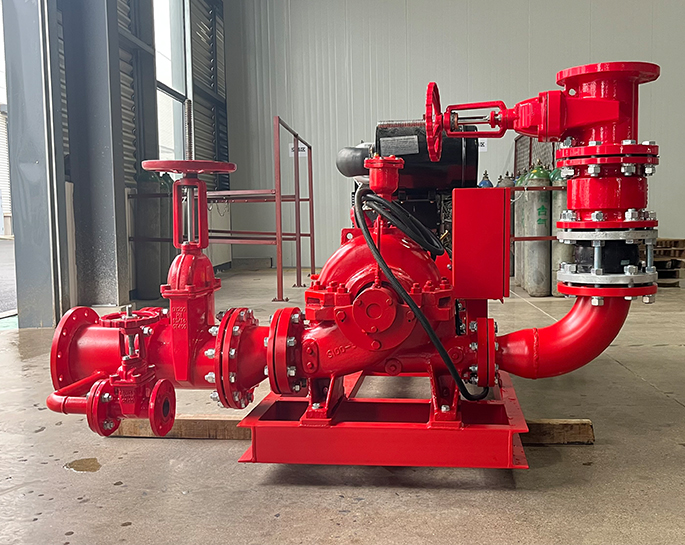What is the significance of the National Fire Protection Association (NFPA) standards for fire pumps?
Jan 17, 2024
Share:
The National Fire Protection Association (NFPA) standards for fire pumps are crucial for ensuring the proper design, installation, and maintenance of fire pump systems. Fire pumps play a vital role in firefighting by supplying water at an adequate pressure to the fire protection system, such as sprinklers or standpipes. Here are some key significances of NFPA standards for fire pumps:
1. **Safety:** NFPA standards provide guidelines to ensure that fire pump systems meet safety requirements. This includes specifications for materials, construction, and performance to minimize the risk of failures or malfunctions during firefighting operations.
2. **Reliability:** The standards set by NFPA help in establishing the reliability of fire pump systems. This is essential to ensure that the pumps will operate effectively when needed, providing a dependable water supply to control or extinguish a fire.
3. **Uniformity:** NFPA standards promote uniformity in the design and installation of fire pump systems. This consistency is critical for firefighters and emergency responders who may encounter various systems and need to rely on standardized practices for effective operation.
4. **Compliance:** Following NFPA standards ensures compliance with recognized industry practices and codes. Compliance with these standards is often required by local building codes, insurance companies, and regulatory authorities, emphasizing the importance of adhering to these guidelines.
5. **Performance Criteria:** NFPA standards outline performance criteria for fire pumps, including flow rates, pressure levels, and other parameters. Meeting these criteria is essential to ensure that the fire pump system can effectively suppress fires and protect life and property.
6. **Inspection and Maintenance:** NFPA standards provide guidelines for the inspection, testing, and maintenance of fire pump systems. Regular inspections and maintenance help identify potential issues, ensuring that the system remains in proper working condition.
7. **Documentation:** The standards require proper documentation of the design, installation, testing, and maintenance of fire pump systems. This documentation is valuable for building owners, inspectors, and emergency responders to verify the system's compliance and operational status.
In summary, NFPA standards for fire pumps play a crucial role in establishing safety, reliability, and uniformity in the design, installation, and maintenance of fire pump systems. Following these standards helps ensure that fire pump systems effectively contribute to fire protection and emergency response efforts.

1. **Safety:** NFPA standards provide guidelines to ensure that fire pump systems meet safety requirements. This includes specifications for materials, construction, and performance to minimize the risk of failures or malfunctions during firefighting operations.
2. **Reliability:** The standards set by NFPA help in establishing the reliability of fire pump systems. This is essential to ensure that the pumps will operate effectively when needed, providing a dependable water supply to control or extinguish a fire.
3. **Uniformity:** NFPA standards promote uniformity in the design and installation of fire pump systems. This consistency is critical for firefighters and emergency responders who may encounter various systems and need to rely on standardized practices for effective operation.
4. **Compliance:** Following NFPA standards ensures compliance with recognized industry practices and codes. Compliance with these standards is often required by local building codes, insurance companies, and regulatory authorities, emphasizing the importance of adhering to these guidelines.
5. **Performance Criteria:** NFPA standards outline performance criteria for fire pumps, including flow rates, pressure levels, and other parameters. Meeting these criteria is essential to ensure that the fire pump system can effectively suppress fires and protect life and property.
6. **Inspection and Maintenance:** NFPA standards provide guidelines for the inspection, testing, and maintenance of fire pump systems. Regular inspections and maintenance help identify potential issues, ensuring that the system remains in proper working condition.
7. **Documentation:** The standards require proper documentation of the design, installation, testing, and maintenance of fire pump systems. This documentation is valuable for building owners, inspectors, and emergency responders to verify the system's compliance and operational status.
In summary, NFPA standards for fire pumps play a crucial role in establishing safety, reliability, and uniformity in the design, installation, and maintenance of fire pump systems. Following these standards helps ensure that fire pump systems effectively contribute to fire protection and emergency response efforts.


.png)
.png)

.png)


